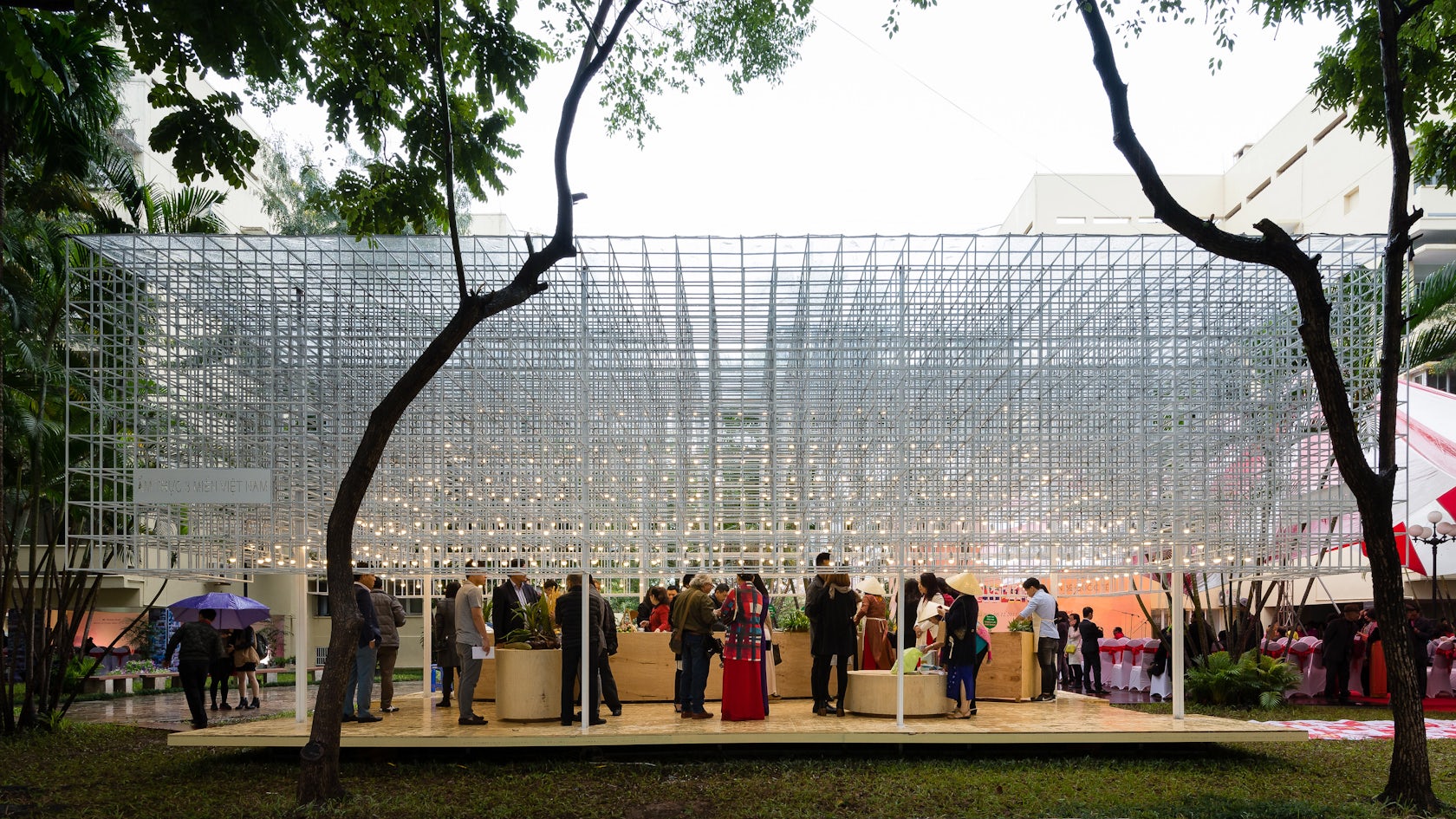Vietnam has a long history of reunification and reform, a past which continues to shape its modern building practices. Part of Imperial China for over a millennium, Vietnam gained independence in 939. Later, the country would experience the rise and fall of dynasties, French colonization, Japanese occupation, and finally, the Vietnam War. After 1975, Vietnam was unified and began a series of political and economic reforms. Today, Vietnam has one of the highest economic growth rates in the world, as well as a unique contemporary design culture.
Located on the Indochina Peninsula, Vietnam and its building fabric are tied to the country’s hilly and densely forested landscape. The diverse topography between the northern highlands and southern lowlands led to a varied climate, where architecture had to meet different thermal and liminal considerations. Constructed amidst basalt plateaus, continuous coastlines and the Red River Delta, Vietnamese architecture adopted a nimble and adaptable nature.
Favoring small-scale innovation and novel material assemblies, new Vietnamese projects are beginning to establish formal and spatial languages that challenge conventional norms. Going beyond traditional Vietnamese stilt constructions and the nation’s large, historic buildings, the subsequent projects explore modern Vietnamese cultural design and expression. Built with different programs and scales, they represent emerging investigations into Vietnam’s architectural identity.

© G8A Architecture & Urban Planning

© Regis Golay
DOTS by group8asia, Hanoi, Vietnam
Designed to house 1,700 employees with a limited budget, this pavilion project was made to disappear into the landscape. A transparent façade combines with an open interior to accommodate natural vegetation and various programmatic functions.

© Handhome

© Handhome
Handhome House by Handhome, Hanoi, Vietnam
Handhome House was built as small structures connected by a central space. The project’s performance space opens up the surrounding context to accommodate shows and social functions.

© Vo Trong Nghia Architects

© Vo Trong Nghia Architects
Bamboo Wing by Vo Trong Nghia Architects, Vinh Phuc Province, Vietnam
Taking the form of bird wings floating over the landscape, Bamboo Wing explores the structural potential of bamboo. As a pure bamboo structure with no steel, the design opens 40 feet high above space for gatherings, weddings and private functions. The building’s shape was made to capture wind and minimize the use of conditioned air.

© 1+1>2 Architects

© 1+1>2 Architects
Cam Thanh Community House by 1+1>2 Architects, Hội An, Vietnam
Sited south of Hoi An, this community center was made among waterways and mangrove forests. Providing a physical space to connect economic, social and scientific groups, the project features three buildings with a continuous flow. Flexible partitions were also used to adapt to various programmatic needs.

© Quang Tran

© Quang Tran
The Hut by a21 studio, Natural Heritage Area Trang, Vietnam
Located within a former flood plain, The Hut was built to recall the days when boats were an indispensable means of transportation during high water. A new upstream hydroelectric facility now controls water flow, and as such, The Hut was made with a simple structure and space for reflection.

© Hiroyuki Oki

© Hiroyuki Oki
Naman Retreat Conference Hall by Vo Trong Nghia Architects, Ngũ Hành Sơn, Đà Nẵng, Vietnam
This project was created as a conference hall for the Naman Retreat Resort. Forming the resort’s first impression, the conference hall was made with space for meetings, concerts and lectures. The hall was created with a vault bamboo structure using both Luong and Tam Vong bamboo.

© BUREAU A

© BUREAU A
Vu’on (The Garden) by BUREAU A, Lim, Viet Nam
Vu’on was created as a temporary garden installation for Tadioto. The project was located within a Soviet-era factory in Hanoi at the border of an old French neighborhood. The installation was made as a “tropical forum,” a space for debate and meditation.

© H&P Architects

© H&P Architects
BES Pavilion by H&P Architects, Ha Tinh Province, Vietnam
BES pavilion was designed as an open community space to foster arts and culture. Capitalizing on traditional building methods and local materials, the pavilion was organized as separate spaces around a center courtyard.

© Quang Tran

© Quang Tran
Vietnam Food Pavilion by MIA Design Studio, Hanoi, Vietnam
The Vietnam Food Pavilion was based on the traditional Vietnamese folk house. Transparent and interactive, the pavilion houses a display counter showcasing cuisine across three national regions. Tables surrounding the counter were made to represent the Paracel and Spratly Islands.









